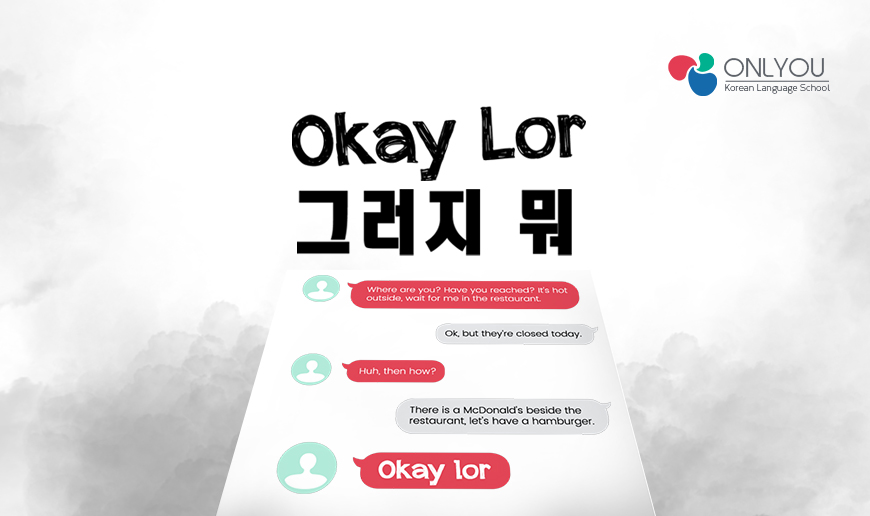How You Can Use ‘Lor’ In Your Daily Korean Conversations

Singlish is a distinctive form of communication that almost every Singaporean uses in everyday conversation.
In the Korean language, there are several expressions that are similar to Singlish.
What if we can use 'Lor' in a casual conversation with a Korean friend?
Learning Korean will be much more fun and easier for us to express our thoughts!
To express resignation or reluctance, "Lor" is commonly placed at the end of a sentence or paired with another word. In the Korean language, you can make the nuance of 'lor' by using '~지, 뭐'.
그러지, 뭐. [Geu-reo-ji-mo] ![]() , Okay Lor (Singlish)
, Okay Lor (Singlish)
= I'll do so then / Let's do so then
◆ Usage example 1
| A: | 어디야? 식당 도착했어? 더우니까 안에서 기다리고 있어. Where are you? Have you reached? It's hot outside, wait for me in the restaurant. |
| B: | 응. 근데 여기 오늘 문 닫았네. Ok, but they're closed today. |
| A: | 헐, 그럼 어쩌지? Huh, then how? |
| B: | 옆에 맥도날드 있는데 햄버거 먹자. There is a McDonald's beside the restaurant, let's have a hamburger. |
| A: | 그러지, 뭐. Okay lor. |
◆ Usage example 2
| A: | 우리 내일 보기로 한 거 알지? You know we are meeting tomorrow, right? |
| B: | 헐.. 맞다. 미안 ㅠㅠ 나 깜빡 잊고 내일 남자 친구 만나기로 했는데... Oh my... right. Sorry. I forgot about it and I am meeting my boyfriend tomorrow... |
| A: | 그럼 다음 주에 보지, 뭐. Then we meet next week lor. |
| B: | 고마워 ㅠㅠ 정말 미안해 ㅠㅠ Thank you. So sorry. |
Conclusion
These are just a few examples of how you can utilise ‘-지, 뭐.’ in your day-to-day conversations. While it is acceptable to use ‘-지, 뭐.’ in similar situations, it is also important to note that the Korean language differs from Singlish, and this is not meant to be a direct translation. If you are interested in learning more about the Korean language and emulate a native Korean speaker, you can consider signing up for our online Korean language courses.
